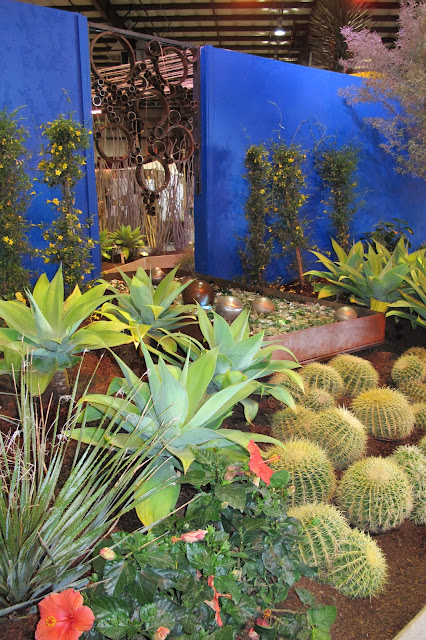 I spent some time this week transplanting my everbearing strawberry plants. For the past three years I've had them in a bed surrounding what was a very young, small flowering cherry tree. Well, that tree is now a good 10 feet tall and it casts more shade on the bed than strawberry plants can take and keep producing. The bed has also become a favorite place for my dog to take a nap and I think that accounts for a number of the plants dying. So I dug up all the remaining plants, put most in a tall strawberry pot and the rest in a hanging basket. With any luck they'll start fruiting by May.
I spent some time this week transplanting my everbearing strawberry plants. For the past three years I've had them in a bed surrounding what was a very young, small flowering cherry tree. Well, that tree is now a good 10 feet tall and it casts more shade on the bed than strawberry plants can take and keep producing. The bed has also become a favorite place for my dog to take a nap and I think that accounts for a number of the plants dying. So I dug up all the remaining plants, put most in a tall strawberry pot and the rest in a hanging basket. With any luck they'll start fruiting by May.All these strawberry thoughts brought to mind a strawberry dessert I tasted a couple years ago when I was out wine-tasting in the Livermore Valley. The Amphora Nueva company had samples of their olive oils and vinegars to taste and they also had a simple dessert made with fresh strawberries, angel food cake, slivered almonds, and maple balsamic vinegar. It was delicious. The following recipe has only a couple changes, such as using pomegranate balsamic vinegar (which is easier to find) instead of maple, and adding a topping. The measurements are very approximate because this is something you can really just throw together to taste. It's soooooo easy and very yummy. Enjoy!
Strawberry-Angel Food Dessert
2 lbs. fresh strawberries, sliced
3 or 4 slices angel food cake, torn in bite-sized pieces
Pomegranate balsamic vinegar, approx. 1/4 cup
slivered almonds, approx. 1/2 cup
1/2 cup sour cream
1 tbsp. brown sugar
Put the sliced strawberries in a mixing bowl and sprinkle with 1 or 2 tbsps. of the vinegar. Let rest for about 10 minutes. Add the angel food cake bits and almonds and toss to combine. Sprinkle a little more vinegar over the mixture, but not so much that the cake pieces get soggy. Spoon into large wine glasses. Mix the sour cream and brown sugar and top each glass of the strawberry mixture with a dollop of the sweetened sour cream. Serves 5.






















